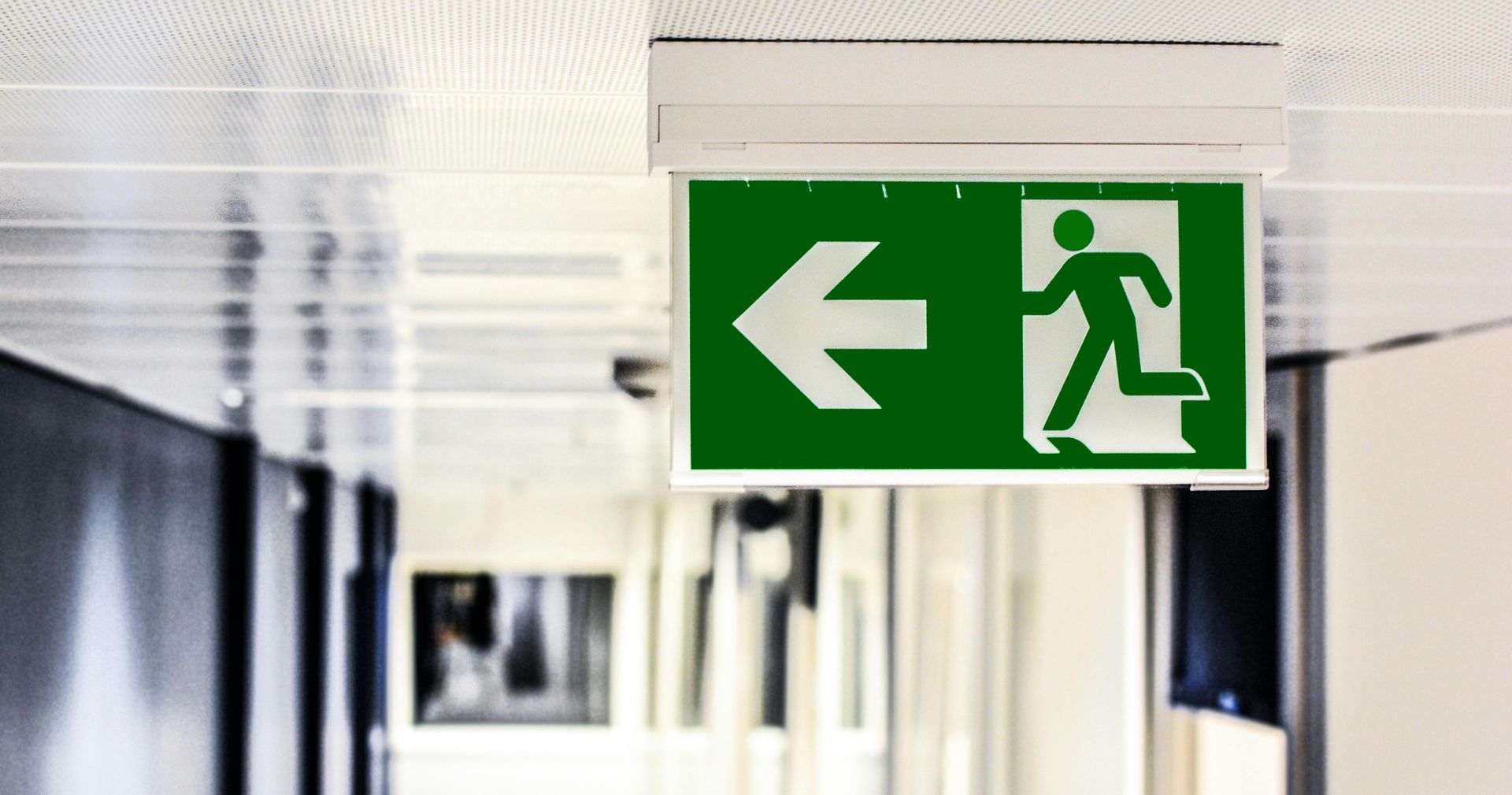Facilities Management Made Simple: Everything you need to know about EMG lighting
Understanding Facilities Management: Emergency Lighting
Emergency lighting (EMG lighting) is an essential aspect of facilities management, designed to provide illumination when normal lighting systems fail. Whether during a power outage or an emergency such as a fire, emergency lighting ensures safe evacuation, reduces panic, and can even save lives. In this blog post, we’ll explore the importance of emergency lighting, its types, regulatory requirements in the UK, and how facilities managers can ensure compliance and functionality.

What Is Emergency Lighting?
Emergency lighting refers to lighting systems that activate automatically when a building’s primary power supply fails. These systems are powered by backup batteries and are critical in providing visibility for safe evacuation during emergencies.
Types of Emergency Lighting
There are several types of emergency lighting systems, each designed for specific functions within a facility.
- Escape Route Lighting
Guides occupants to the nearest exit during an emergency.
Typically installed along staircases, corridors, and exit doors.
- Standby Lighting
Provides temporary lighting for continued use of facilities in less critical situations.
Not mandatory but useful for certain operations like medical facilities.
- Open Area (Anti-Panic) Lighting
Reduces panic in large spaces like auditoriums or shopping centres by illuminating open areas.
Helps occupants move safely toward escape routes.
- High-Risk Task Area Lighting
Installed in areas where critical or hazardous tasks are performed.
Ensures safety for employees who may need to shut down equipment or complete procedures before evacuation.
Why Is Emergency Lighting Important?
Emergency lighting is not just a regulatory requirement—it’s a critical safety measure that serves multiple purposes:
- Safe Evacuation: Provides clear visibility and guidance, reducing the risk of injury during evacuations.
- Minimising Panic: Bright, reliable lighting reassures occupants during power outages or emergencies.
- Legal Compliance: Failure to implement emergency lighting can lead to fines, penalties, and liability in the event of an accident.
- Property Protection: In high-risk areas, emergency lighting can prevent further damage by ensuring proper shutdown of machinery or hazardous systems.
UK Regulatory Requirements for Emergency Lighting
In the UK, emergency lighting systems are governed by several regulations and standards to ensure safety and compliance:
- The Regulatory Reform (Fire Safety) Order 2005
Requires employers and property managers to ensure the safety of occupants by providing suitable fire safety measures, including emergency lighting.
- BS 5266-1: Code of Practice
Offers guidelines for emergency lighting installation, maintenance, and testing in non-domestic buildings.
- Health and Safety at Work Act 1974
Imposes a duty of care on employers to provide safe working environments, including functional emergency lighting.
Key Requirements:
- Emergency lighting must illuminate escape routes, exits, and essential safety equipment such as fire extinguishers and alarm points.
- Lighting systems should activate within one second of a power failure.
- Systems must be tested regularly to ensure functionality.
Responsibilities of Facilities Management
Facilities managers play a critical role in ensuring that emergency lighting systems meet regulatory standards and function reliably. Here’s how they can achieve this:
- Design and Installation
Work with certified lighting contractors to design and install systems that meet BS 5266-1 standards.
Ensure appropriate placement of lights along escape routes, staircases, and high-risk areas.
- Routine Testing and Maintenance
Monthly checks: Conduct short-duration tests to confirm system activation.
Annual inspections: Perform full-duration tests to ensure backup batteries can sustain lighting for the required time (usually three hours).
Maintain records of all inspections, tests, and maintenance activities for compliance audits.
- Employee Training
Train staff on emergency evacuation procedures and the role of emergency lighting.
Conduct periodic fire drills to familiarise occupants with escape routes.
- Upgrades and Modernisation
Transition from traditional incandescent systems to energy-efficient LED emergency lighting, which offers longer lifespans and lower energy consumption.
Explore smart emergency lighting systems that provide real-time monitoring and diagnostics.
Common Challenges and How to Address Them
- Battery Failures: Regular testing and timely replacement of backup batteries are crucial to prevent failures during emergencies.
- Improper Placement: Conduct thorough assessments to ensure all critical areas are adequately covered.
- Neglected Maintenance: Partner with a reliable FM provider to establish a consistent testing and maintenance schedule.
The Future of Emergency Lighting
With advancements in technology, emergency lighting systems are becoming smarter and more efficient:
- IoT Integration: Smart systems allow real-time monitoring of emergency lighting, ensuring quick identification of faults.
- Sustainable Solutions: Solar-powered emergency lighting and LED systems reduce energy consumption and carbon footprints.
- Adaptive Lighting: Advanced systems can adjust brightness and direction based on real-time conditions, improving visibility and energy efficiency.
Conclusion
Emergency lighting is a vital component of facilities management, safeguarding the safety and wellbeing of occupants while ensuring regulatory compliance. By implementing a robust emergency lighting strategy, facilities managers can mitigate risks, enhance safety, and reduce liability.
At SEFM, we specialise in the design, installation, and maintenance of emergency lighting systems for UK businesses. Contact us today to learn more about how we can help you create a safer, more compliant facility.
SEFM are proud to offer facilities management services across the UK; if you need any help with your facility, fill out our form by clicking here and a member of our team will be happy to assist you!

